
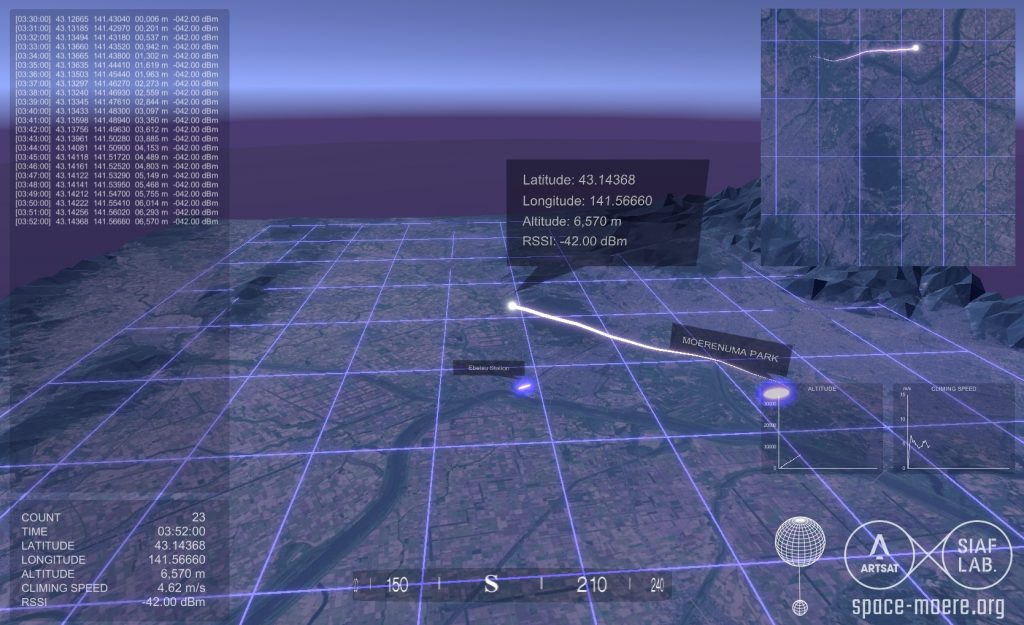
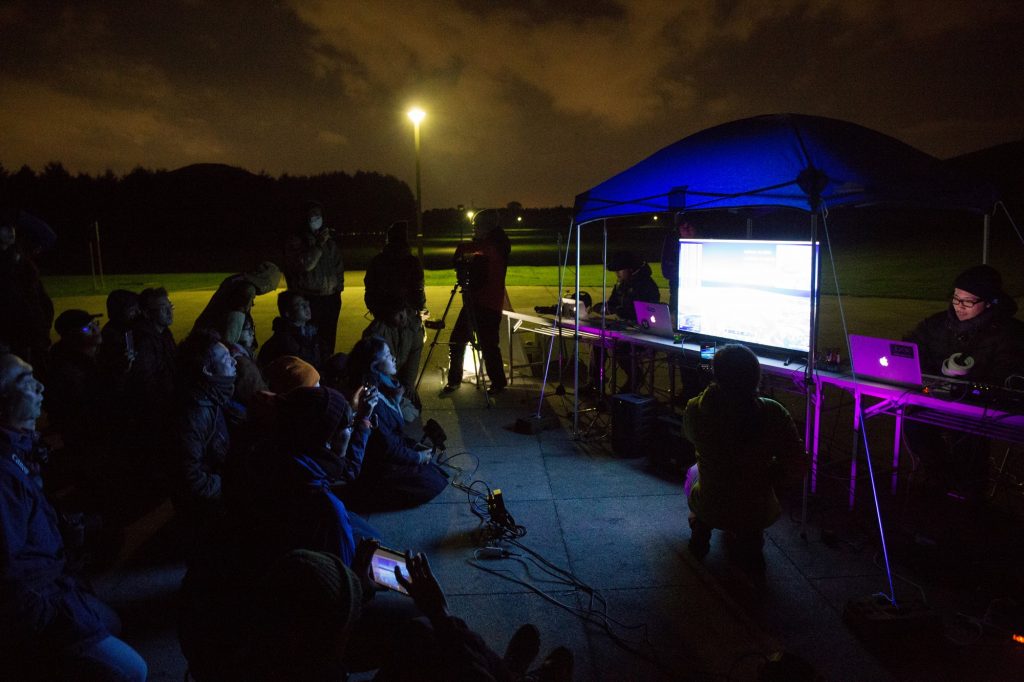 Telecoding Live Performance
Telecoding Live Performance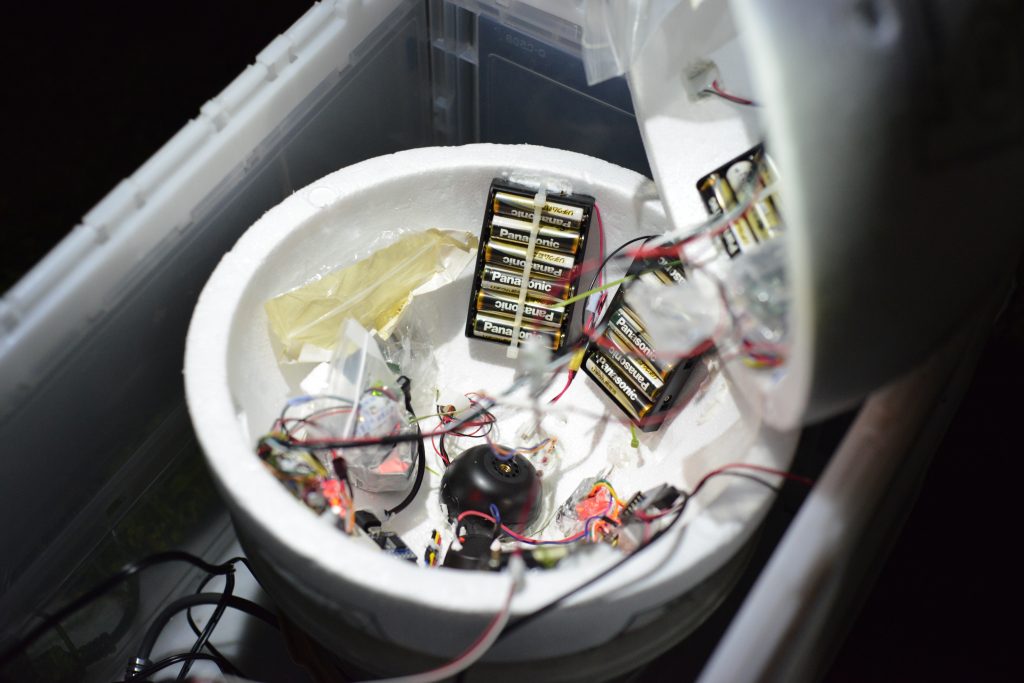
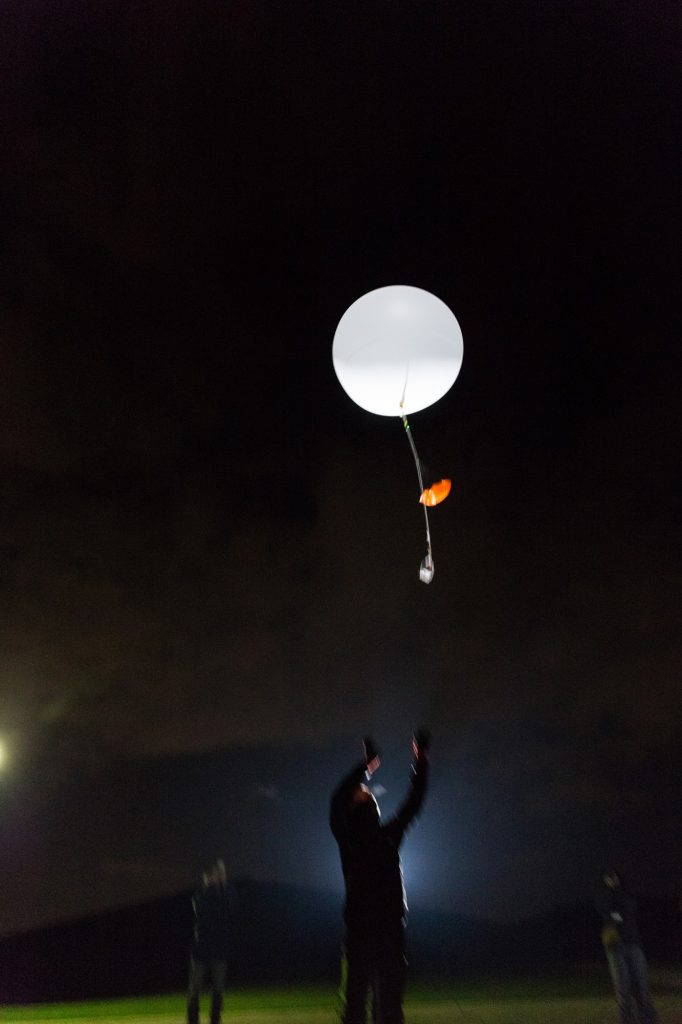
In this project, we developed two softwares which simplified the payload function and improved reliability, and they led our second challenge to success.
These two solutions allowed us to make the structure of payload very simple with a dry-cell battery, 500 yen on-board computer and a sheet of Telecoding Shield, and we successfully presented live telecoding performance while checking the balloon’s trajectory.
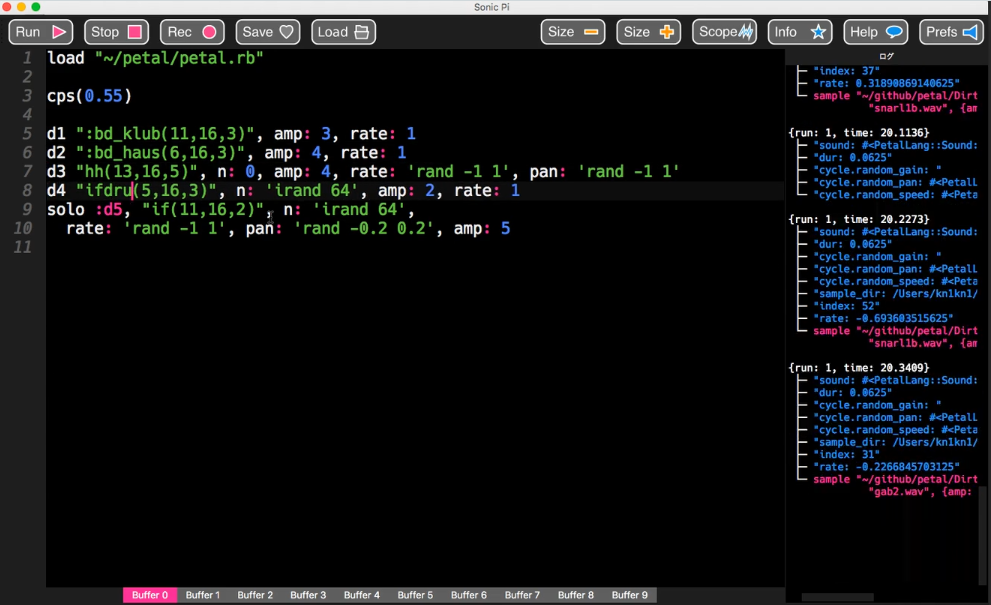
We used 920MHz band LoRa module for communication between the high-altitude balloon and the ground station to reduce the weight of payload. But with the restriction of transmission time specified by 920MHz band regulations, we couldn’t send large data on a steady basis. So we developed “Petal,” the original language similar to “TidalCycles,” to reduce traffic of codes creating music.

For further reduction of weight of payload and integration of communication networks, we developed “VirtualFPV” which cut down the FPV camera that payload had to carry. It made it possible to monitor the balloon’s condition, which could not visually observed in three-dimensional space, in real time at the ground station by location information of payload contained in codes. Also it made a contribution to mission success as it made it easier to compare the real time trajectory with the simulation result, and to reproduce the past flight data.
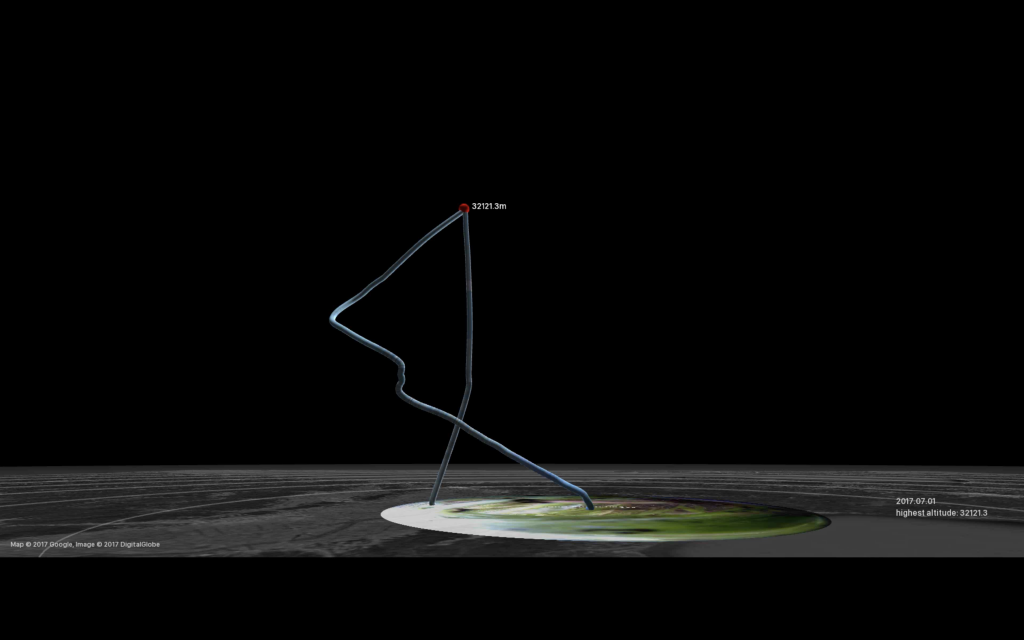 The trajectory of the high-alti-tude balloon that was launched from Moerenuma Park.
The trajectory of the high-alti-tude balloon that was launched from Moerenuma Park.